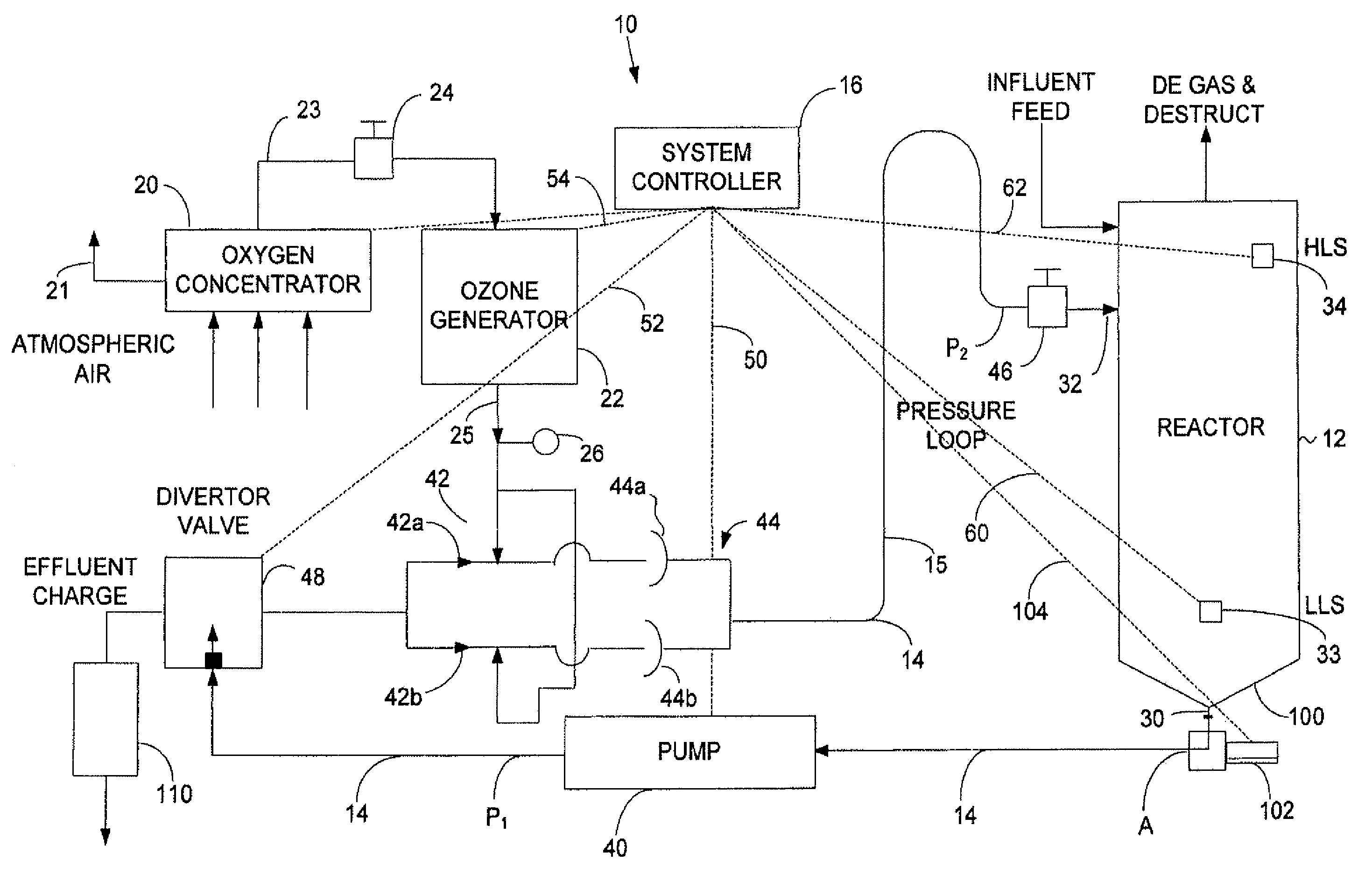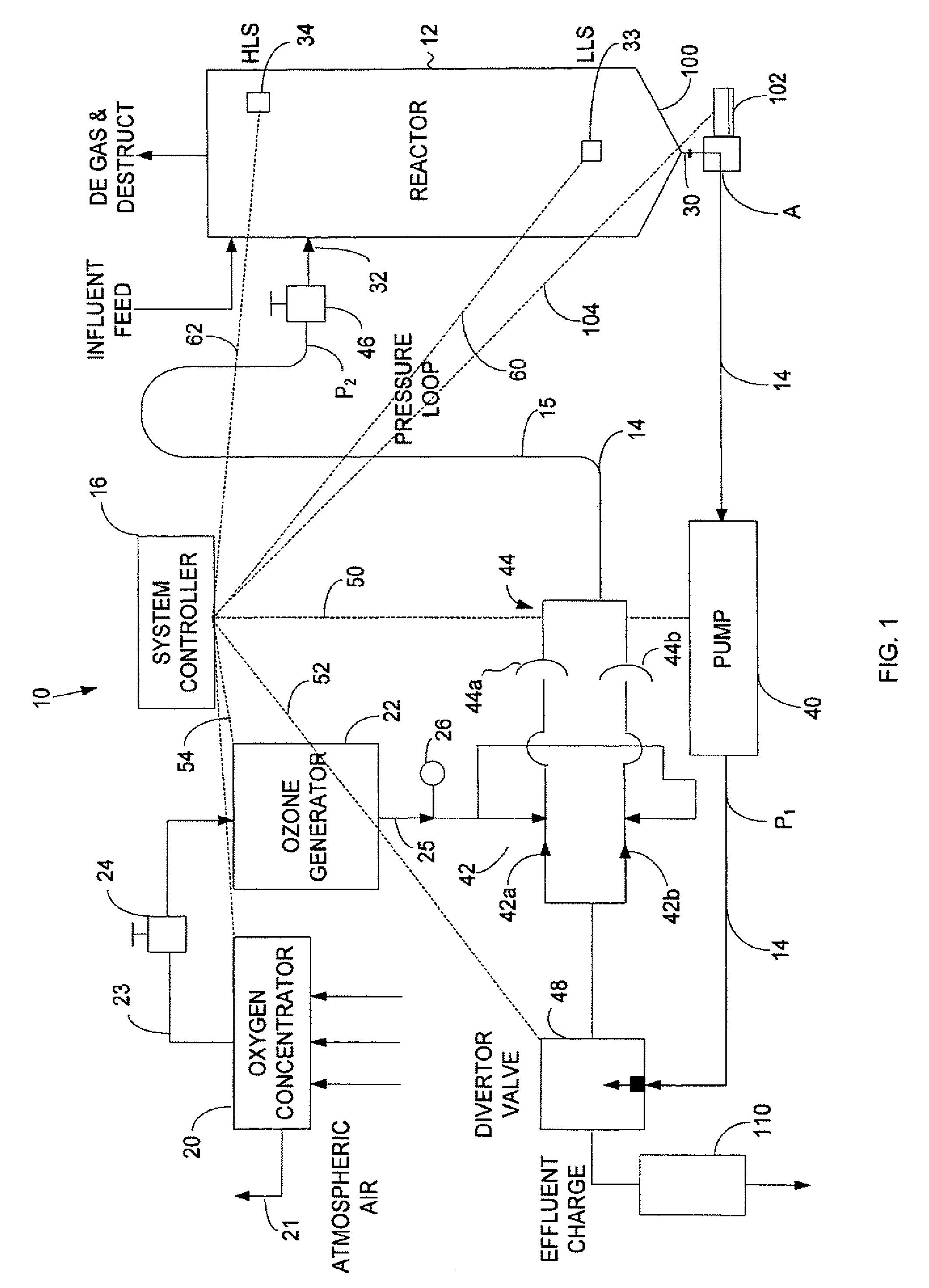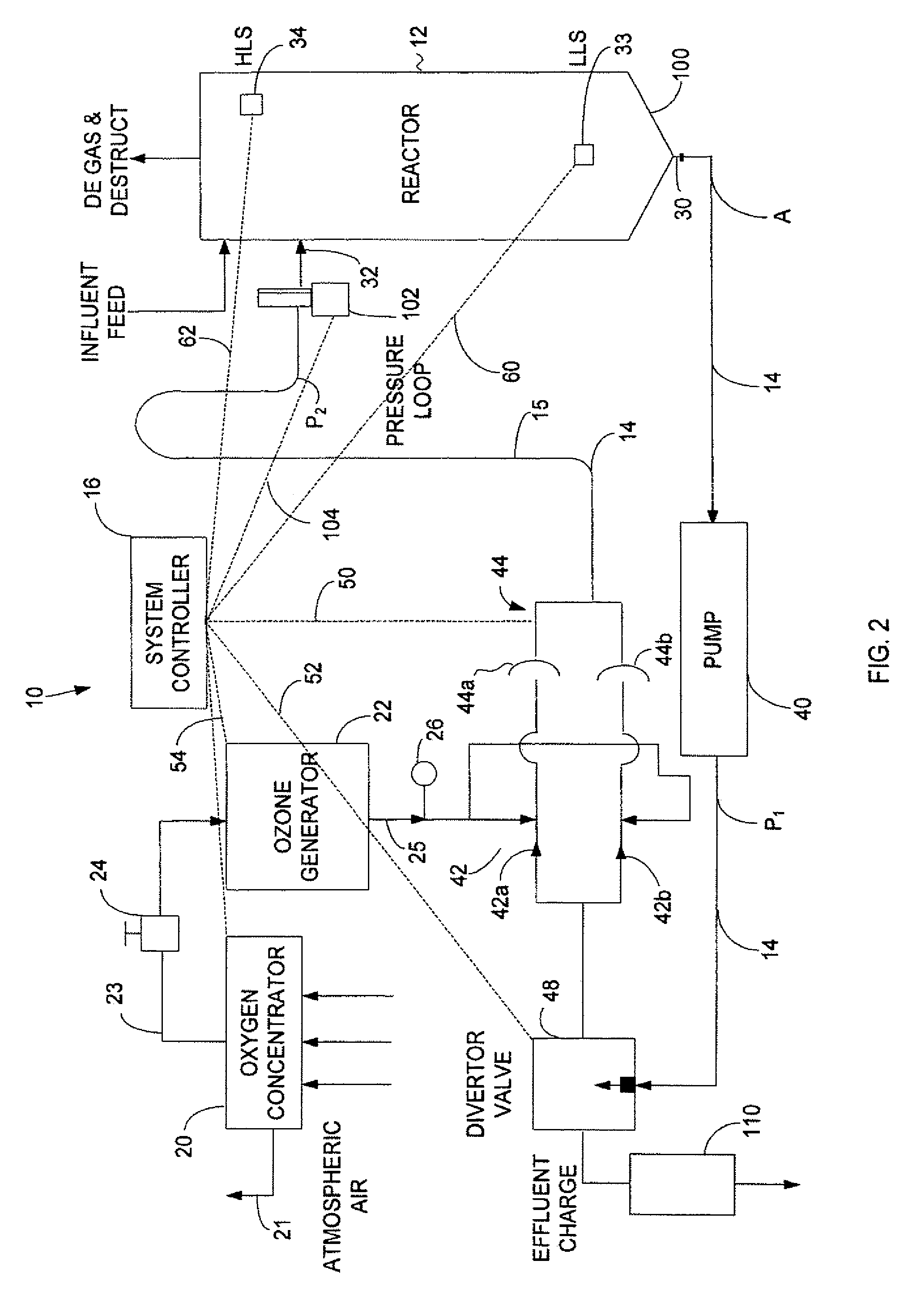Oxidation process
a technology of oxidation process and oxidation method, which is applied in the direction of water/sewage treatment by degassing, separation process, filtration separation, etc. it can solve the problems of material being released to the environment which is not acceptable in the environment, other fluids which are not suitable for general disposal back to the atmosphere, and pharmaceuticals, whether as primary products or as secondary products, are not effectively treated in some sewage treatment plants
- Summary
- Abstract
- Description
- Claims
- Application Information
AI Technical Summary
Benefits of technology
Problems solved by technology
Method used
Image
Examples
Embodiment Construction
[0021]The basic mechanism for treating an aqueous solution to render it more desirable for disposal in accordance with this invention involves an advanced oxidation process. In an advanced oxidation process, the aqueous solution is mixed with ozone. When ozone is mixed with an aqueous solution, the ozone inter-reacts with the compounds and organisms within the solution to reduce the amount of undesired chemicals in, and disinfection of the solution. Such a system and apparatus are described in our previous U.S. Pat. No. 6,402,945 and U.S. Pat. No. 6,673,251, the entire disclosures of which are incorporated herein by reference.
[0022]It has surprisingly been found that there are very substantial benefits that may be obtained by maintaining a mixture of the aqueous solution and ozone under pressure above atmospheric for at least a selected time period. We have shown that increasing the pressure to which the mixture is subjected provides increased results. We have also shown that increa...
PUM
| Property | Measurement | Unit |
|---|---|---|
| pressure | aaaaa | aaaaa |
| pressure | aaaaa | aaaaa |
| pressure | aaaaa | aaaaa |
Abstract
Description
Claims
Application Information
 Login to View More
Login to View More - R&D
- Intellectual Property
- Life Sciences
- Materials
- Tech Scout
- Unparalleled Data Quality
- Higher Quality Content
- 60% Fewer Hallucinations
Browse by: Latest US Patents, China's latest patents, Technical Efficacy Thesaurus, Application Domain, Technology Topic, Popular Technical Reports.
© 2025 PatSnap. All rights reserved.Legal|Privacy policy|Modern Slavery Act Transparency Statement|Sitemap|About US| Contact US: help@patsnap.com



